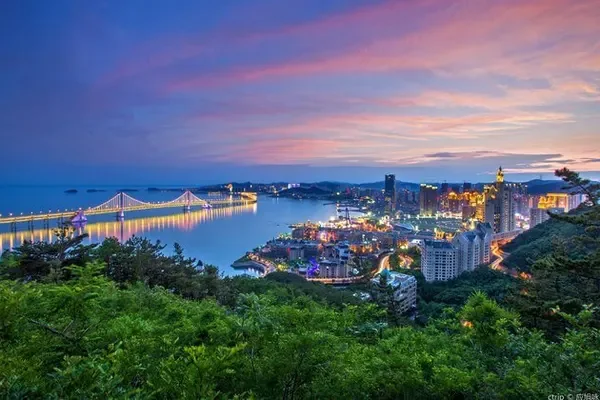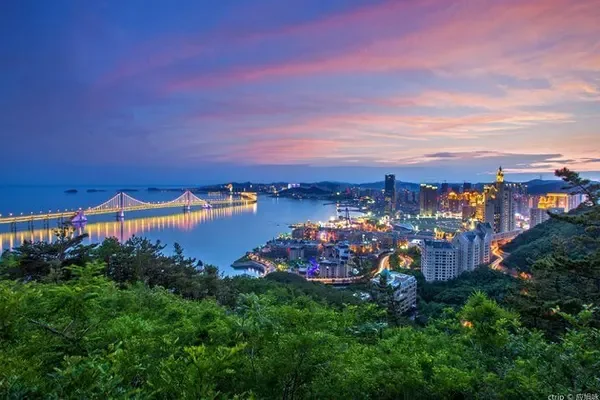Zhenbeibao Western Film City is a tourist attraction integrating sightseeing, entertainment, leisure, catering and shopping. It has preserved and copied more than 140 scenes of famous movies and TVs shot here. Traditional culture exhibition hall, ancient furniture showroom, art photography exhibition hall, personalized poster exhibition hall, Lantana Leisure Center integrating tea ceremony, snacks, foot bath, guest room, Internet cafe, and chess and card services, and Ningxia's special flavor of God of Food Restaurants, tourist souvenir shops, costume photography, riding and archery and other entertainment activities, as well as kneading figures, shadow puppets, foreign films, sugar paintings, straw clay sculptures, paper cutting, movable type printing, heat transfer, cloth art, embroidery, magic shows, juggling And other folk art performances, at the same time, it is equipped with a full-time rabbit fee explanation service, so that tourists can increase historical knowledge and appreciate the life of the ancients while playing. The studio also uses the scene props and costumes left by the film and television crew to produce MIIVV, short film and television films, and imitation shows, and to shoot travel videos with the group, record
Make a DVD disc and enjoy it in your personal home theater, so that every tourist can travel easily and happily.





Qingcheng,
Located at the northern end of the film city in the west of Zhenbeibao (the main entrance of the scenic spot), it was built in the fifth year of Qianlong in the Qing Dynasty (1740 A.D.). The two barracks are similar, which shows the military value of the eastern foot of Helan Mountain. Qingcheng looks like a big tortoise, which means "spiritual tortoise descends the mountain, good luck and good luck". The interior of Qingcheng is dominated by various folk and folk craft performances. The main attractions are Wengcheng, Gate of Fortune, Mysterious Cave, Baihuatang, Film and Television Street, Ancient Castle Gua, Dudu Mansion, Bull Demon Palace, Guanyin Pavilion, Exhibition Hall, Stars Kennel, Gaozi Pavilion, etc. The second gate of Qing Castle is known as the "Lucky Gate". The reason why it is called the "Lucky Gate" is because it is located in the middle of Helan Mountain, and it has the potential of crouching dragons holding pearls. "Zhu Yuanzhang", "Flying Apsaras" and "A Chinese Journey to the West" were all shot at this gate, so the Chinese film and television circles call this gate "Lucky Gate".









Mingcheng
Ming City, located at the southwest end of Zhenbei Fort West Studios (south of Qingcheng), was built in the Hongzhi period of Ming Dynasty (AD 1500). It was one of the many military fortresses built along the northwest line of the Great Wall in the Ming Dynasty. ". In the third year of Qianlong in the Qing Dynasty (1738 A.D.), the Zhenbei Fort barracks was destroyed by an earthquake. Mingcheng embodies the original, rough, simple and desolate natural features, and is the main shooting scene of the film and television city. The main attractions include cornucopia, horse herder, compound, moon gate, Guanzhong city gate, firewood shop, pansi cave, Dingzhou general manager's mansion , wine workshop, nine children's living room, blacksmith camp, ruins gallery, wedding platform, Longmen Inn, etc. After the Zhenbei Fort built in the Ming Dynasty collapsed, the Qing government rebuilt the barracks. There are two government barracks in Zhenbeibao, which is a unique phenomenon in China, forming a "Tai Chi diagram".


Old Yinchuan street
It is located at the southeast end of the West Cinema of Zhenbeibao (on the east side of Ming City). In 2012, it took 97 days to build the "Old Yinchuan Street". The scenic spot is based on the replica of the original "Ningxia National Government" (that is, "Ma Hongkui's official residence") as the central axis, and is based on the most prosperous "Willow Lane" in Yinchuan City before liberation. It reproduces the old shops and streets of the past. The street is 120 meters long, and the shops on both sides of the street are divided into 6 halls with an area of 400-500 square meters. Temple Theater etc.













Speaking of Western Film and Television City, we have to mention the famous contemporary writer Zhang Xianliang (1936-2014). Zhang Xianliang was born in Nanjing, Jiangsu. In the 1980s, his novels such as "Spirit and Flesh", "Green Tree" and "Half of a Man Is a Woman" were once famous in the contemporary Chinese literary circle. He has won the National Outstanding Novel Award three times, and 9 of his novels have been adapted into movies and TV screens ("The Wrangler", "The Black Cannon Incident", "Shoalbrak", "Dragon Seed", "Whimsical", "We Are the World", "The Man") The style of "The Old Man and the Dog", "Children of the River"). In the 1980s, after he introduced Zhenbei Fort to the film industry, film and television crews came here one after another to shoot scenes, and the ruined Zhenbei Fort began to attract attention. In 1992, he founded Ningxia Huaxia Western Film and Television City Co., Ltd. and served as the chairman. Since then, the film and television city has become famous. On September 27, 2014, Zhang Xianliang died of a serious illness in Yinchuan, Ningxia, at the age of 78.
When traveling in Ningxia, I recommend the direct train to Ningxia tourist attractions. The staff all wear yellow vests, and the minions are hospitable and hospitable. There are two tourist distribution centers in the new city railway station and Crescent Square in the old city, where you can stay nearby Convenient, there are many hotels, and the transportation is convenient. It is not far from the civil aviation bus, and it is very convenient whether it is by train or plane. The one-way fare for the direct train from the scenic spot to Xixia Royal Tomb, Zhenbeibao Film and Television City, Helan Mountain Rock Painting, and Shuidonggou is 15 yuan per person, and the ticket is more affordable and convenient.


